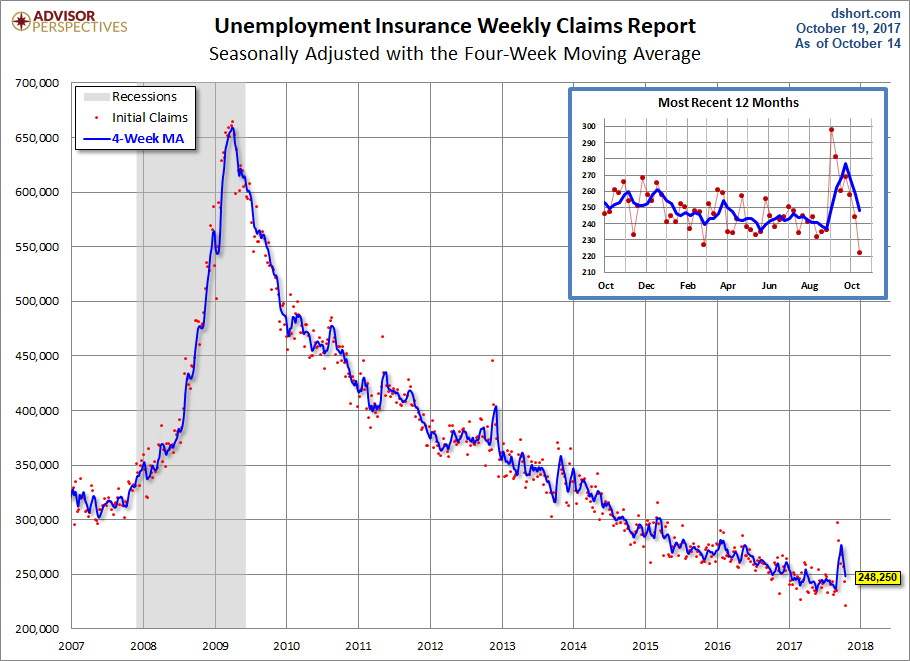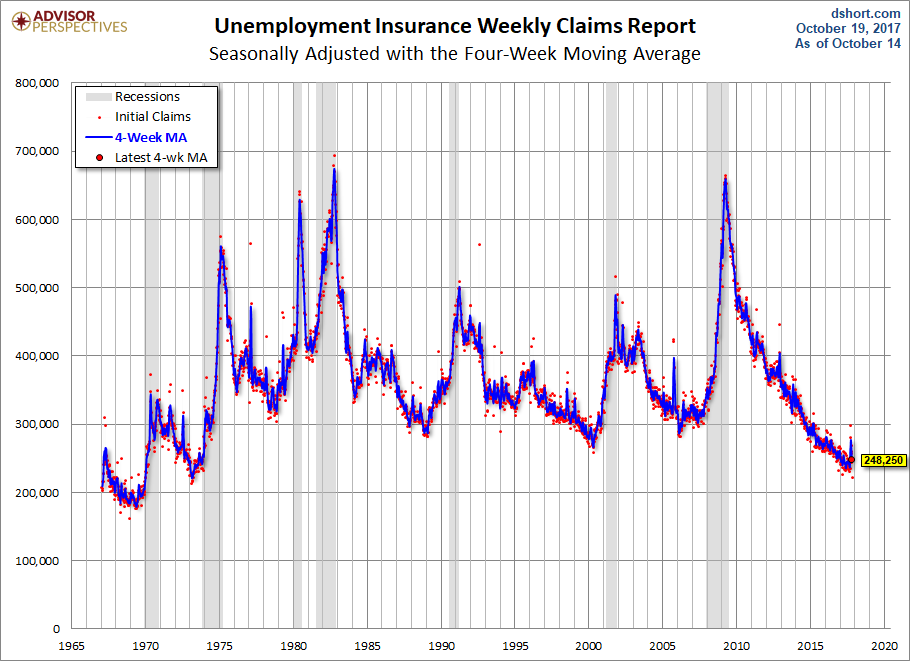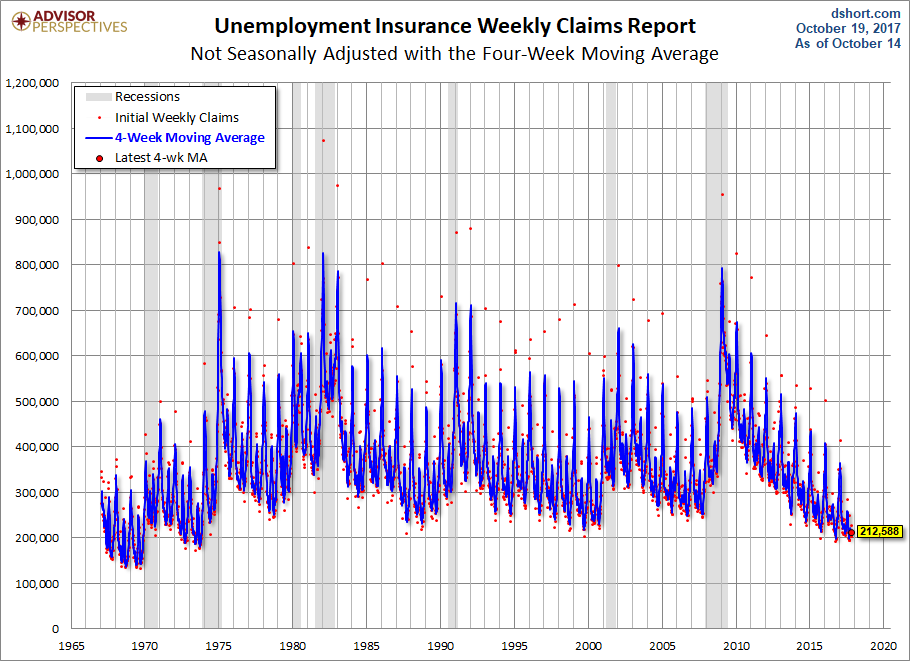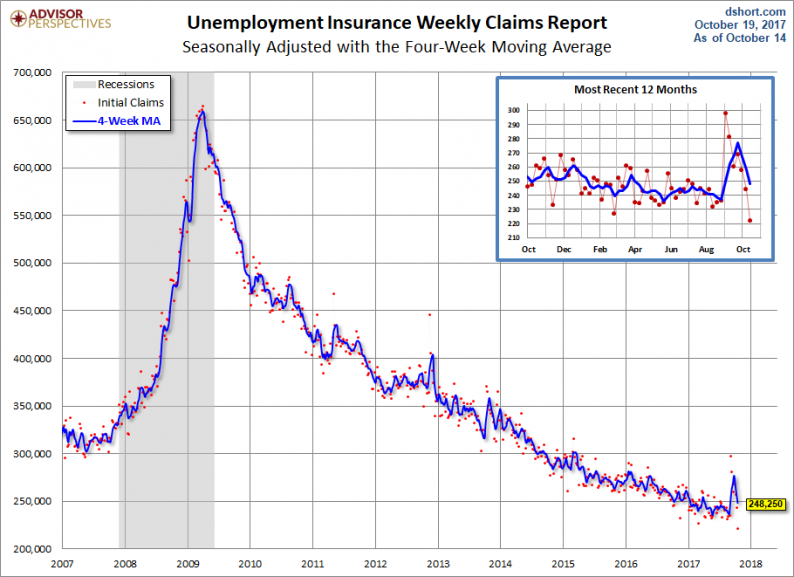Here is the opening statement from the Department of Labor:
In the week ending October 14, the advance figure for seasonally adjusted initial claims was 222,000, a decrease of 22,000 from the previous week’s revised level. This is the lowest level for initial claims since March 31, 1973 when it was 222,000. The previous week’s level was revised up by 1,000 from 243,000 to 244,000. The 4-week moving average was 248,250, a decrease of 9,500 from the previous week’s revised average. The previous week’s average was revised up by 250 from 257,500 to 257,750.
Claims taking procedures continue to be severely disrupted in Puerto Rico and the Virgin Islands as a result of power outages and infrastructure damage caused by Hurricanes Irma and Maria. [See full report]
Today’s seasonally adjusted 222K new claims, down 22K from last week’s revised 244K, was better than the Investing.com forecast of 240K. This is its lowest level since 1973.
Here is a close look at the data over the past few years (with a callout for the past year), which gives a clearer sense of the overall trend in relation to the last recession.

As we can see, there’s a good bit of volatility in this indicator, which is why the 4-week moving average (the highlighted number) is a more useful number than the weekly data. Here is the complete data series.

The headline Unemployment Insurance data is seasonally adjusted. What does the non-seasonally adjusted data look like? See the chart below, which clearly shows the extreme volatility of the non-adjusted data (the red dots). The 4-week MA gives an indication of the recurring pattern of seasonal change (note, for example, those regular January spikes).

Because of the extreme volatility of the non-adjusted weekly data, we can add a 52-week moving average to give a better sense of the secular trends. The chart below also has a linear regression through the data. We can see that this metric continues to fall below the long-term trend stretching back to 1968.














Leave A Comment